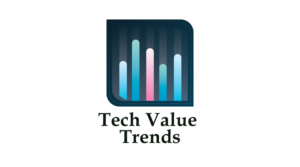In the past years, a wide array of technologies have brought innovation to IT so that developers can code without worrying about the underlying infrastructure. Serverless computing happens to be an excellent choice in this regard. As you opt for serverless computing, the developers no longer need to focus on server management, as the cloud service provider takes care of everything.
The cloud service provider handles the routine work, such as the scaling, maintenance, and provisioning of the server infrastructure and container management. Hence, the developers will be capable of deploying and writing the code to the containers that tackle the business logic without encountering any challenges.
The public cloud service providers charge the serverless offerings, according to the resources and execution time, in place of the monthly fee for virtual and physical machine maintenance. The billing cycle is initiated with the starting and ending of execution. Choosing this pay-as-you-go model is notable in this aspect, as it assures that as the serverless function becomes idle, the developers do not need to pay for anything.
Servers are involved in serverless
Serverless includes servers at the backend services. However, the cloud service provider handles the. serverless signifies that the servers remain invisible to the potential developers who are not managing them.
The serverless framework is divided into two different categories: FaaS and BaaS. FaaS is regarded as a common serverless computing model. Such a cloud computing service allows potential developers to write the app code as a set of different event-driven functions and execute them as the cloud service providers manage the containers. Certain HTTP requests and events trigger the function. The cloud service provider runs them on the new and running server. As the execution process is not visible to potential developers, it is referred to as serverless computing.
Reasons to choose serverless computing
The latest years have witnessed a massive rise in serverless adoption. A bunch of business enterprises are adopting serverless architecture in certain forms. Different startups and business enterprises are adopting serverless computing. Now, we are going to talk about the different benefits of serverless computing:
The potential developers write the code in different frameworks and languages, such as Javascript, Python, Java.
By choosing the pay-for-execution model, there is a considerable reduction in the operational costs within the serverless model.
As the developers do not need to spend on provisioning infrastructure and time, serverless brings a simplification to the DevOps adoption.
Serverless computing allows the developers to concentrate on code deployment and code writing. It is useful in boosting productivity. As routine tasks are removed from infrastructure management, the developers will have more time for innovation.
The serverless system introduces visibility within the usage information and system.
GCP, or Google Cloud Platform
GCP, or Google Cloud Platform, provides a fully managed serverless on gcp platform with different components for deployment and developing different highly scalable serverless apps. GCP boasts a serverless model, which helps in scaling the servers automatically according to traffic.
Cloud Functions
It happens to be the scalable FaaS platform of GCP, which provides a suitable option for potential users to execute the code within the cloud with regards to the events that get triggered by HTTP requests and Firebase features. Hence, you no longer have to handle the containers and servers.
It executes the functions across different environments, like cloud runs, local environments, and on-premise environments, thereby preventing lock-in. You can make use of the Google Cloud Function to connect with different third-party cloud solutions, thereby streamlining different orchestration issues.
The pay-as-you-go platform is useful for writing and executing smaller code snippets on the GCP console and writing and deploying them locally through Google Cloud tooling.
Cloud Run
It happens to be the serverless, fully managed platform, which is useful in deploying and developing highly scalable containerised apps on GCP. It provides a suitable opportunity to use the operating system libraries and programming language. Moreover, it is useful in bringing the binaries together to create sites. In addition, the Cloud Run charges for the used resources only. Cloud Run works with different Google Cloud Services to create different full-featured apps.
Cloud Run offers a simple user interface and command line to handle and deploy different services and apps faster. It enables integration with Cloud Code and Cloud Build to ensure continuous deployment.
Service Integration Components
Google Cloud Platform offers different service integration products to combine orchestration services. It is useful to the developers as it helps them concentrate on app development. Such products are known to integrate different services that are loosely coupled and asynchronous. It assures that every individual’s agility is preserved and allows for faster innovation. Furthermore, they offer a bunch of benefits, like scalability, security, observability, and reliability, to name a few.
Scheduler
The presence of a cloud scheduler in Google Cloud is useful in triggering batch processes and automating the schedule. It happens to be the fully managed job scheduler, which provides a suitable choice for the developer to schedule the job, like cloud infrastructure and batch operations.
Eventarc
Eventarc allows you to connect the Cloud Run services with different events from various sources. It does not need any kind of infrastructure management, thereby optimizing costs and boosting productivity.
Workflows
It provides the scope for potential developers to combine the APIs and GCP service to create machine learning pipelines, apps, and processes for automation.
Tasks
Google Cloud Platform offers offloading asynchronous work with the different cloud task queues. Cloud Tasks happens to be a fully managed service that enables distributed dispatch, execution, and delivery. Thus, you can run the tasks on the HTTP endpoint and app engine.

